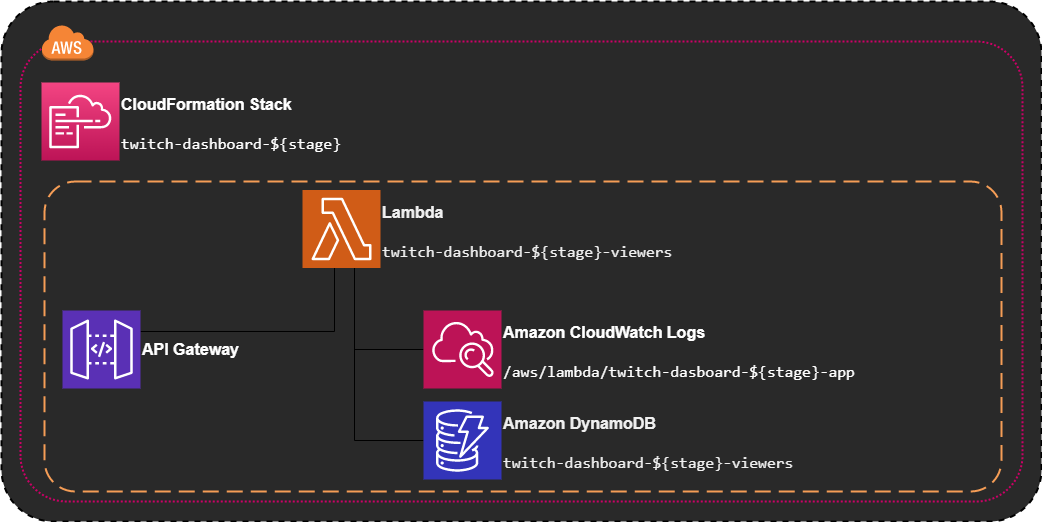Simple RESTful API for twitch dashboard, built on top of the Serverless Framework for Node.js.
The API provides operations to search for game stream views and can run offline (local) or deployed on a serverless computing platform.
Note: If you don’t already have Node on your machine, you’ll need to install it first. The latest LTS version of NodeJS is suggested.
Install the serverless CLI:
npm install -g serverless
It's mandatory to set Twitch API keys, how to do it: Environment Variables section
First step, install DynamoDB:
sls dynamodb install
Then, the api can run offline by using a serverless framework command:
sls offline start
The API use the Serverless Framework to package and deploy the app, along with the AWS infrastructure resources required in AWS Lambda functions.
AWS system credentials are required for using serverless with AWS, so check the 'Configure AWS Credentials' section below.
The whole serverless configuration is done in the serverless.yml file.
The sls package command packages the entire app and generate the CloudFormation templates into the .serverless directory and make it ready for deployment.
serverless package
| option name | description | default value |
|---|---|---|
--stage or s |
The stage in your service that you want to deploy to. | dev |
--region or r |
The region in that stage that you want to deploy to. | ca-central-1 |
The serverless framework can provision the AWS lambda functions, events, and infrastucture resources with the following command:
serverless deploy
Use this method when you have updated any function, event or resource configuration in serverless.yml and you want to deploy the changes to AWS.
The API leverage the AWS infrastructure to deploy the api as a lambda and stores data in a dynamodb table.
You need to provide credentials to AWS so that only your account and its resources are accessed by the SDK. For more information about obtaining your account credentials, see Getting Your Credentials.
It is recommended to keep the AWS credentials data in a shared file named credentials. When the JavaScript SDK load, it will automatically searches this shared credentials file.
- The shared credentials file on Linux, Unix, and macOS:
~/.aws/credentials - The shared credentials file on Windows:
C:\Users\USER_NAME\.aws\credentials
A basic credential file resemble the following example:
[default]
aws_access_key_id = <YOUR_ACCESS_KEY_ID>
aws_secret_access_key = <YOUR_SECRET_ACCESS_KEY>
The [default] section heading specifies a default profile and associated values for credentials. By default, the SDK checks the AWS_PROFILE environment variable to determine which profile to use. If no AWS_PROFILE is set, the SDK uses the default profile credentials.
See Loading node credentials for more information.
The API use the delightful JavaScript Testing Framework Jest, which work with TypeScript projects. For the jest configuration, see the jest.config.js file.
To run the api "test" script use:
npm test
The option --testNamePattern or -t runs only tests with a name that matches the regex.
Note: The regex is matched against the full name, which is a combination of the test name and all its surrounding suites.
npm test -- -t <regex>
By default logs are suppressed when running unit tests, to enable them set the value of transport.silent at false in test/setup.ts file.
Environment variables are loaded from the serverless.yml.
| Variable name | Description |
|---|---|
| NODE_ENV | the environment on which the app is running, production or development |
| PORT | the http port on which the server is listening |
| CONTEXT_PATH | the base path for all operations in the api |
| AWS_REGION | the aws region to use when not deployed as a server. This variable is part of the AWS Lambda execution environment |
| TWITCH_CLIENT_ID | the Twitch API client ID |
| TWITCH_CLIENT_SECRET | the Twitch API client secret |



